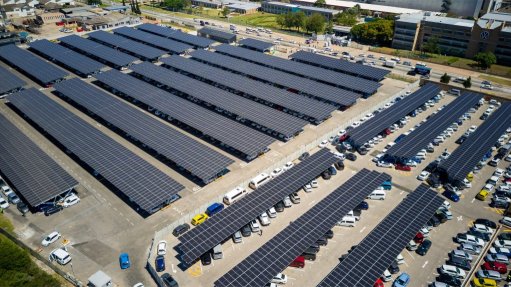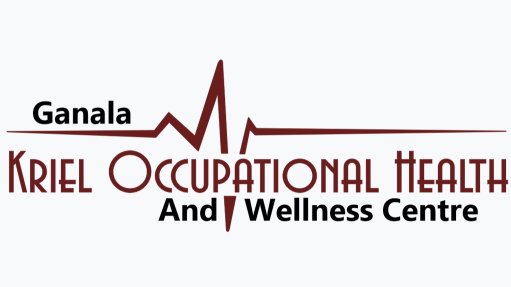Ngodwana specialised cellulose project to be commissioned in mid-2013
Paper and packaging group Sappi’s $340m-million GoCell specialised cellulose (SC) expansion project at its Ngodwana mill, in Mpumalanga, is on track for commissioning by mid-2013 to grow its SC production.
Sappi CEO Ralph Boëttger notes that global demand for dissolved wood pulp is 5.7-million tons a year and is increasing by 6% each year. This figure is expected to increase from next year as supplies of global cotton production flatten and fail to match increasing demand, creating a gap in the textile market, which SC, an alternative to cotton, can fill.
Sappi currently exports the bulk of its dissolving wood pulp to Asia, where demand is high, owing to the expected growth of its middle class from the current 1.9-billion people to 2.7-million people by 2030. By that time, Asia will account for 43% of global dissolving wood pulp consumption, specifically for textiles.
Project GoCell, which has been under construction since 2011, will increase Sappi’s SC production of 780 000 t/y from its Saiccor mill, in Umkomaas, KwaZulu-Natal, by 210 000 t/y when the Ngodwana mill expansion comes on line.
A similar project is under way at Sappi’s North America-based Cloquet mill, in Minnesota. Cloquet is being converted from a kraft pulp mill, at a cost of $170-million, into a 330 000 t/y dissolving wood pulp SC oper- ation.
Once the Cloquet and Ngodwana expansions have been commissioned, Sappi will produce a combined 1.3-million tons a year of SC from the three mills.
SC is a product made from eucalyptus wood in South Africa and is used in a range of consumer products, such as textiles, cellphone screens and pharmaceutical and household products, as well as in the food industry.
Sappi owns and manages 554 000 ha of forest in Southern Africa, 400 000 ha of which is planted. A total of two-million tons of wood a year is consumed by the Ngodwana mill, and this total volume will remain very much the same. There will be a change in the tree species mix when Project GoCell comes on line.
The Ngodwana mill has two pulping lines from which it produces unbleached and bleached softwood and hardwood pulp. The new pulping line that is currently being added will replace the old pulping line that was erected in 1964 and commissioned in 1966.
The South Africa-based arm of Amec, an international engineering and project management company, is undertaking GoCell’s engineering, procurement and construction management, while power and automation technology group ABB is contracted to install the project’s electrification and instrumentation and distributed control system.
Construction group Aveng Grinaker-LTA is responsible for the civil construction of the project. Industrial installation company Ferromont SA (FSA) and its subcontractors are undertaking the mechanical and electrical installations of digesters, presses, tanks and other equipment in the new fibre line and they are currently fully mobilised on site.
Sappi Ngodwana mill GM SW Engelbrecht says the project entails the installation of six new batch digesters, a decanter centri- fuge, an ash-leaching plant, three new concentrators, a stripper column, a reflux condenser and a feed tank, as well as the construction of the digester building, a new control room and an office complex.
Further, the erection of an oxygen reactor, an ozone reactor, the first dioxide bleaching reactor and the second dioxide bleaching reactor has been completed. Work has also started on the pulp-storage tanks and the piping bridges at the new Fibre Line 3 cooking area.
A new dryer was designed and supplied by Austria-based pulp and paper technology group Andritz and is being erected by its subcontractor, ECEP, of Portugal. The dryer will be fully erected and ready to move into the Uptake 3 building in March. The existing dryer will be removed from the building in one piece, using a self-propelled modular trailer, and the new dryer will be moved in to take its place.
The civil construction phase began in October 2011 and was completed in December 2012. Aveng Grinaker-LTA installed 1 500 concrete piles to secure the building foundations, poured 18 000 m3 of concrete and used more than 2 000 t of reinforcing steel.
Engelbrecht says up to 2 500 contract employees will work on the project when construction peaks this month. A further 4 500 employees will join in during the yearly shutdown in the same month when many of the piping and electrical connections to the mill expansion will be completed.
Meanwhile, Project GoCell will also decrease Sappi’s environmental footprint, as mill odour will be reduced through improved efficiencies. The mill will burn 61 000 t/y less coal, compared with its current coal consumption of
500 000 t/y. Less water will also be used, owing to the requirements of the SC process.
Article Enquiry
Email Article
Save Article
Feedback
To advertise email advertising@creamermedia.co.za or click here
Comments
Press Office
Announcements
What's On
Subscribe to improve your user experience...
Option 1 (equivalent of R125 a month):
Receive a weekly copy of Creamer Media's Engineering News & Mining Weekly magazine
(print copy for those in South Africa and e-magazine for those outside of South Africa)
Receive daily email newsletters
Access to full search results
Access archive of magazine back copies
Access to Projects in Progress
Access to ONE Research Report of your choice in PDF format
Option 2 (equivalent of R375 a month):
All benefits from Option 1
PLUS
Access to Creamer Media's Research Channel Africa for ALL Research Reports, in PDF format, on various industrial and mining sectors
including Electricity; Water; Energy Transition; Hydrogen; Roads, Rail and Ports; Coal; Gold; Platinum; Battery Metals; etc.
Already a subscriber?
Forgotten your password?
Receive weekly copy of Creamer Media's Engineering News & Mining Weekly magazine (print copy for those in South Africa and e-magazine for those outside of South Africa)
➕
Recieve daily email newsletters
➕
Access to full search results
➕
Access archive of magazine back copies
➕
Access to Projects in Progress
➕
Access to ONE Research Report of your choice in PDF format
RESEARCH CHANNEL AFRICA
R4500 (equivalent of R375 a month)
SUBSCRIBEAll benefits from Option 1
➕
Access to Creamer Media's Research Channel Africa for ALL Research Reports on various industrial and mining sectors, in PDF format, including on:
Electricity
➕
Water
➕
Energy Transition
➕
Hydrogen
➕
Roads, Rail and Ports
➕
Coal
➕
Gold
➕
Platinum
➕
Battery Metals
➕
etc.
Receive all benefits from Option 1 or Option 2 delivered to numerous people at your company
➕
Multiple User names and Passwords for simultaneous log-ins
➕
Intranet integration access to all in your organisation


















